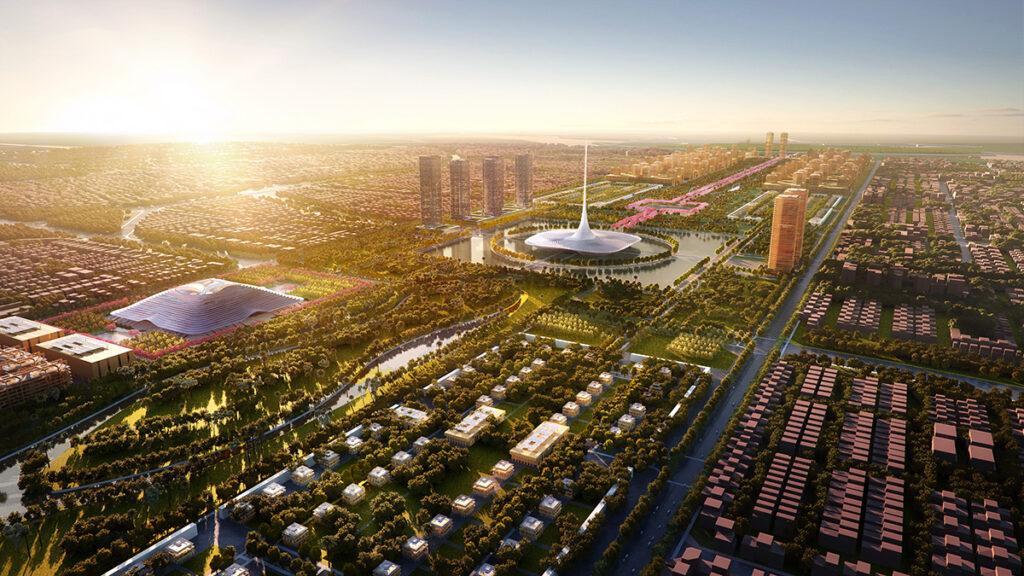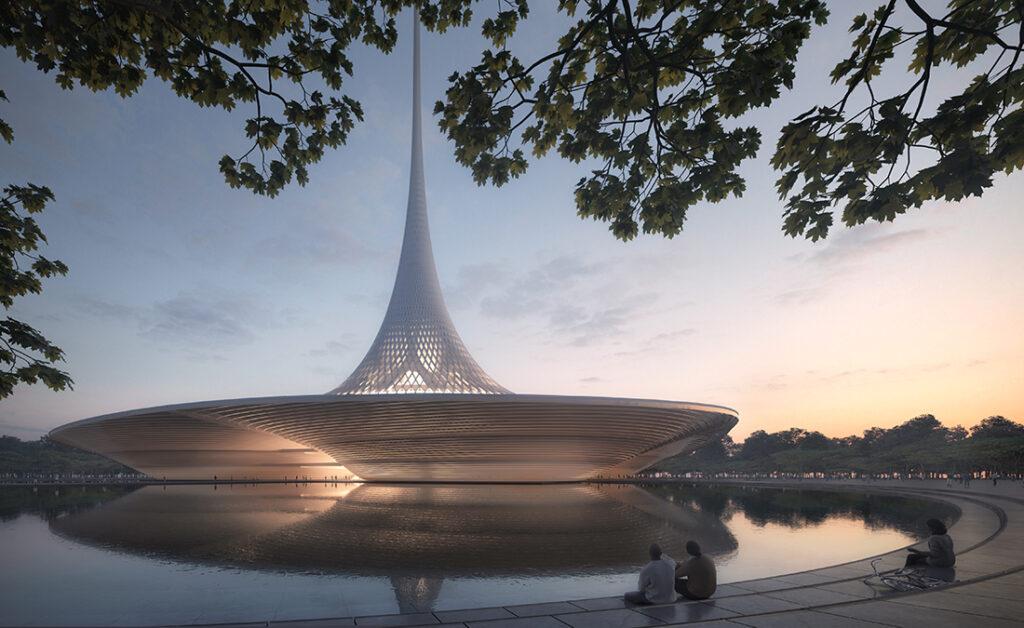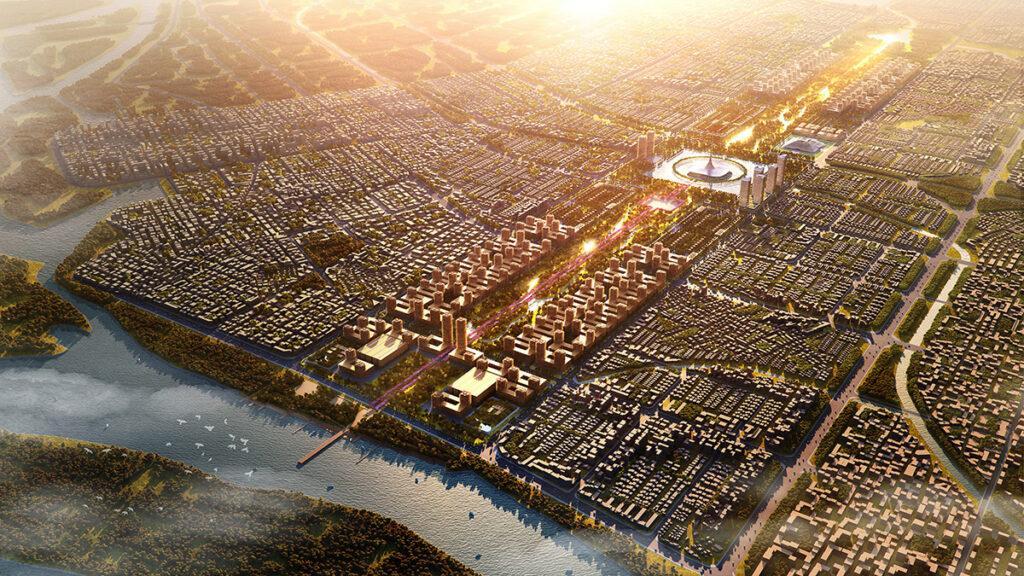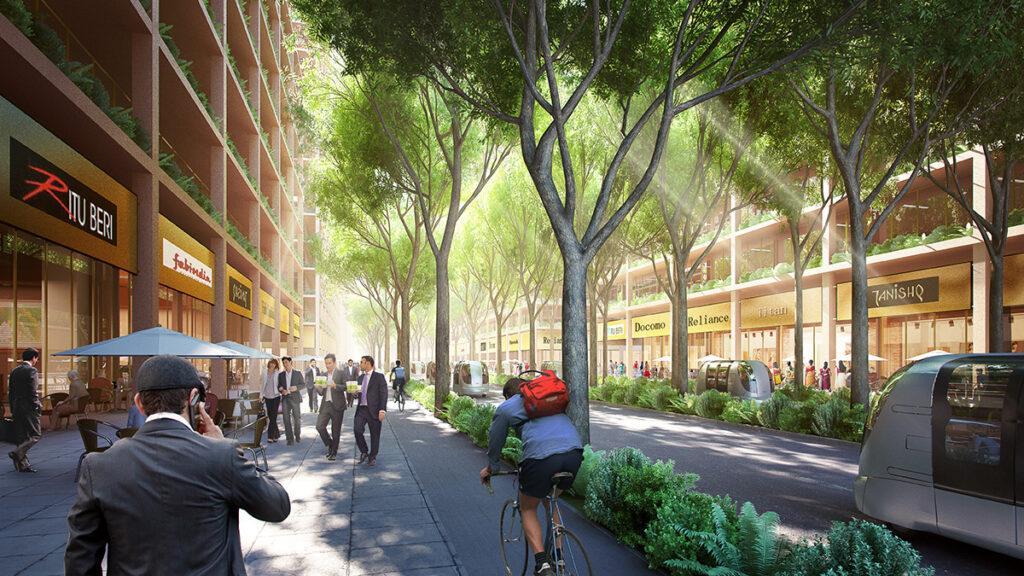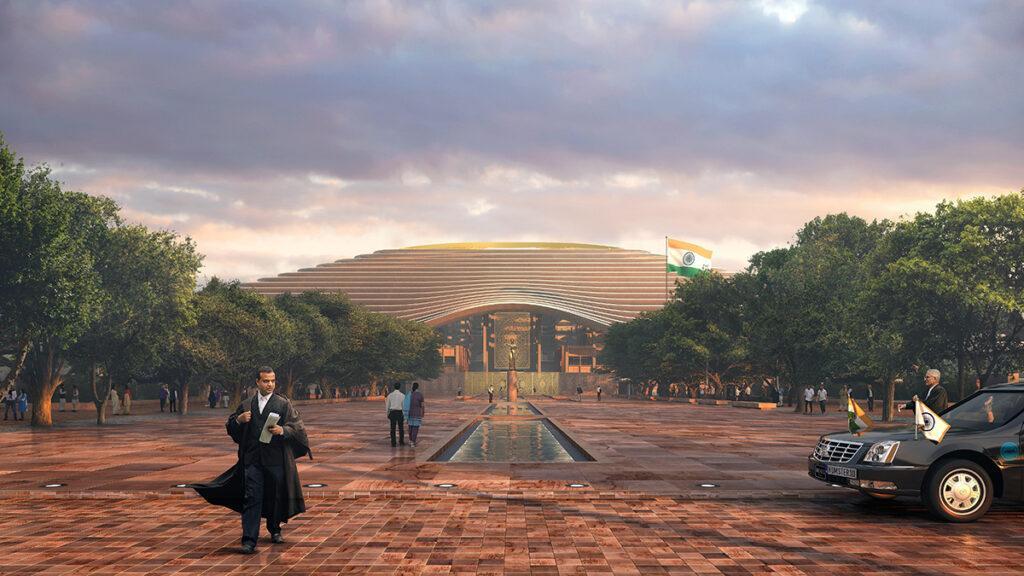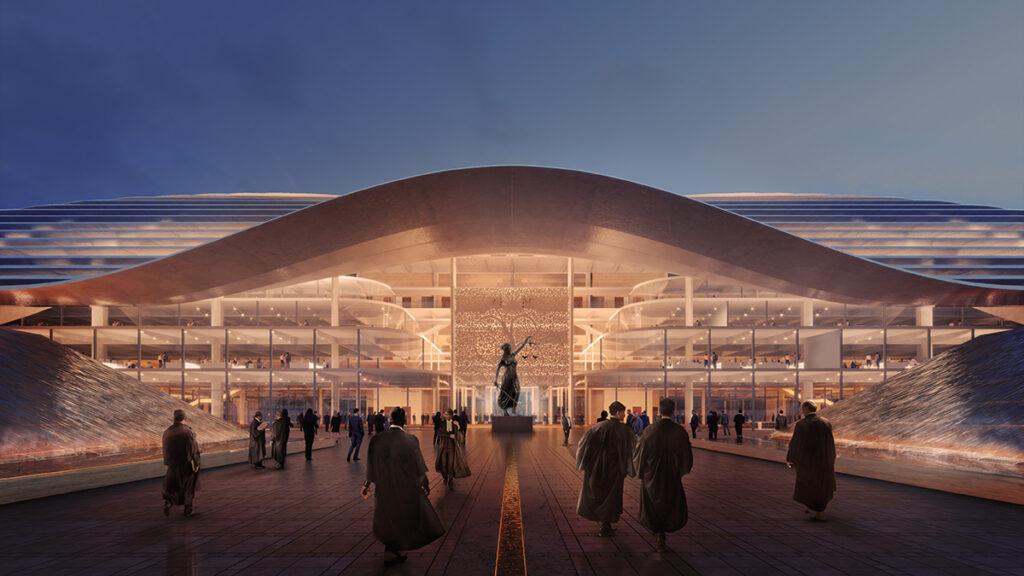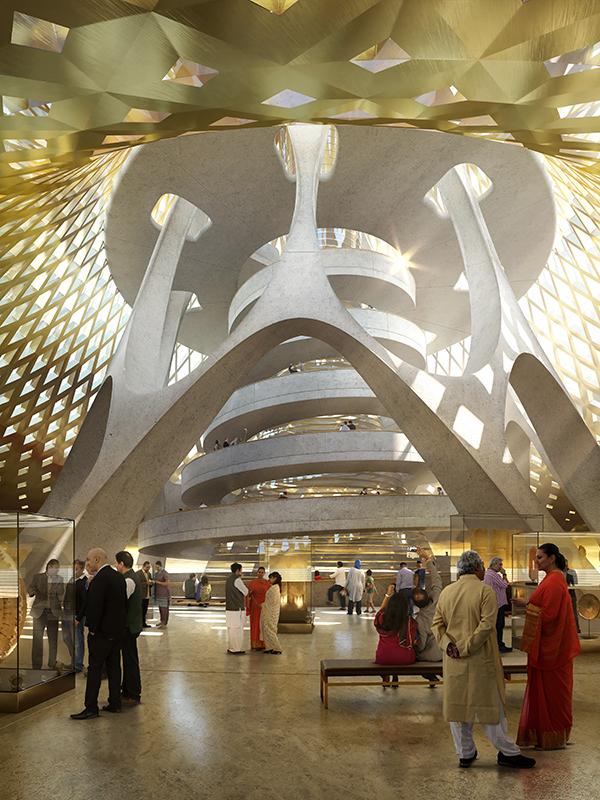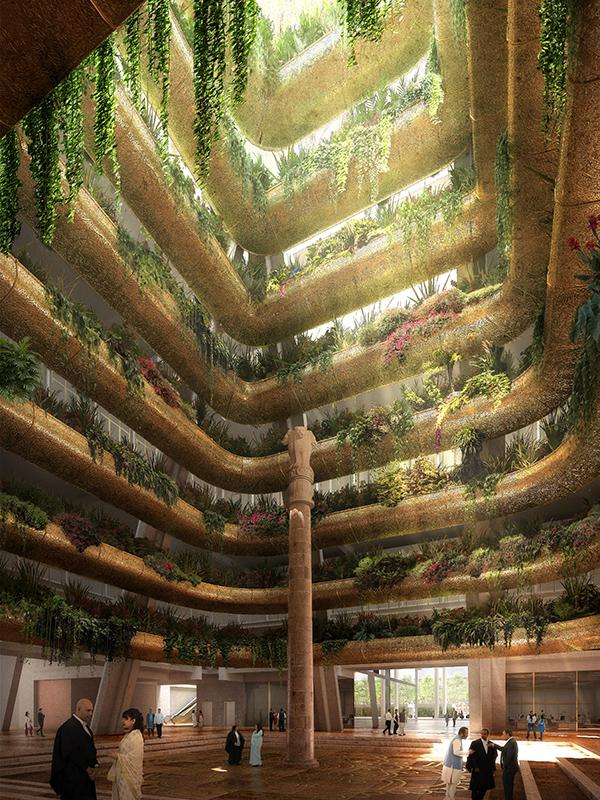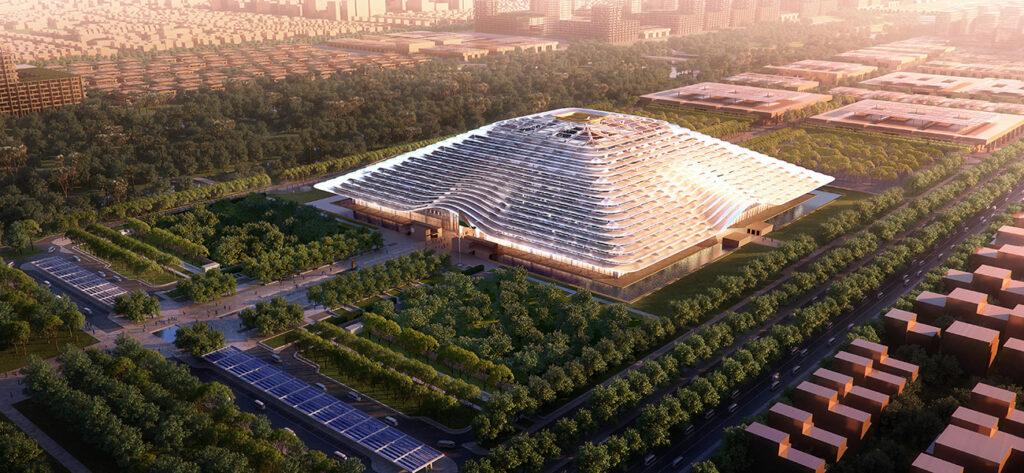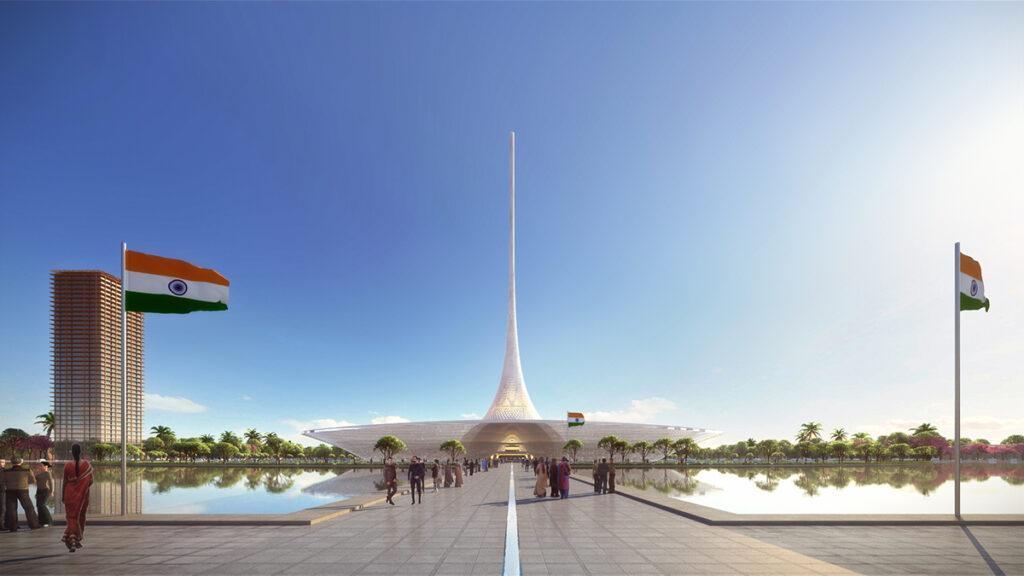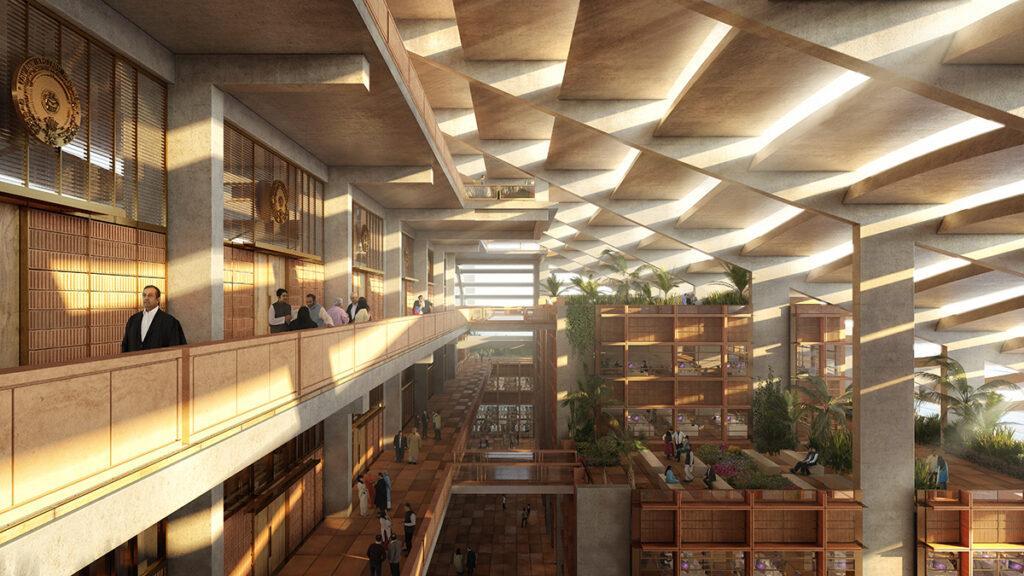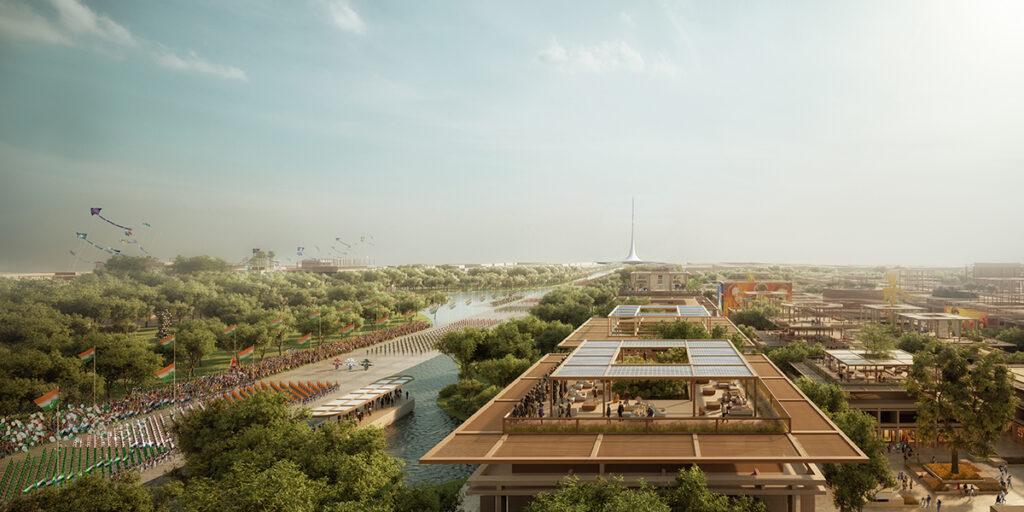The beautiful heart of Amaravati
The new capital of Andhra Pradesh is to be given a new, sustainable heart. Foster + Partners have designed a stunning master plan for the government complex in this Indian state. The concept pays homage to India’s architectural heritage in exquisite fashion.
Even though fantastic projects are underway in Amaravati, media reports in India on this state capital are dominated by controversy. Unlike its predecessor, the current government would prefer to downgrade the city to a strictly legislative centre. This plan has met with strong resistance. After all, Amaravati was only designated as the capital of Andhra Pradesh in 2015. This was one year after the state boundaries were redefined to create the new federal state of Telangana. Energetic construction and expansion have been ongoing ever since.
One most exciting project in progress here is the prestigious master plan for the government complex designed by the renowned studio Foster + Partners. It is an undertaking that is absolutely worthy of a capital city.
The complex extends over an area measuring 5.5 x 1 kilometres. It is intended to form the centre of the 217 km2 city of Amaravati. The heart of the master plan consists of the buildings for the Legislative Assembly, the High Court and the state administration offices. Local history and culture served as inspiration for the team of architects, with the Indian architectural principles of Vastu shastra and the form of Buddhist stupas both reflected here.
Sustainable and green
Located on the banks of the Krishna River, Amaravati has access to abundant fresh water. And it is on course to become one of the world’s most sustainable cities, with an efficient urban network that defines its structure. The concept was inspired by Lutyens’ Delhi and New York’s Central Park, with a green spine running through its length. This forms the basis of the master plan’s environmental strategy. At least 60 percent of the area is reserved for green space or water.
The plan for Amaravati was designed according to the highest standards of sustainability – with the most modern technology currently in use in India. Thus, it makes use of photovoltaics and a transportation strategy that includes electric vehicles, water taxis and bicycle paths. Shady streets and squares are also part of a concept intended to promote pedestrian traffic.
A mixed-use quarter is situated to the south of the river, grouped around 13 city plazas that represent the 13 districts of Andhra Pradesh. In the middle of the green spine is the Legislative Assembly building – a democratic and cultural symbol for the state’s citizens. The master plan places this structure in the centre of a large freshwater lake. It is flanked by the Secretariat and the cultural buildings.
This square ground plan follows the Vastu shastra principle of placement, design and construction, according to the natural laws of the five elements. The public entrance lies to the north, the ministers’ entrance to the east. In the south-west corner of the building, which is considered the most auspicious, the Foster + Partners architects have positioned the plenary chamber. The council hall is envisioned in the north-east corner, with the administrative offices in the north-west section.
Old wisdom for a new Amaravati
Further in alignment with the Vastu shastra ideals, the centre is designed as an empty, courtyard-like space. It is intended to be accessible by the public for most of the year. This provides the capital of Amaravati with a place where citizens can meet with their elected representatives.
A spiral ramp leads up to the cultural museum and viewing gallery. From here, visitors will be able to witness “democracy in action” up close. The building will be protected by a 250-metre-high conical roof with a wide overhanging canopy. This provides shade while still allowing cool breezes to flow through the building.
Stupa roof and temple shape
The High Court complex is located outside the central axis. Its stepped roof form recalls India’s ancient stupas. Shade is provided by the roof’s deep overhangs, which also allow for natural ventilation. The building’s floor plan was inspired by the traditional temple arrangement: concentric layers of rooms and circulation areas alternate with one another.
High-traffic public areas such as administrative offices and lower courts are situated in the outer sections of the new structure in the master plan. The interior sections are reserved for the High Court and Chief Justice’s chambers. Relaxing open space is provided in the lushly planted inner courtyard and a roof garden.
All in all, the master plan renderings promise a magnificent, spacious and sumptuously green city. Paths, courtyards and buildings recall legendary Indian monuments while simultaneously exuding the spirit of the current age.
Honouring history
Materials, shapes and colours also pay tribute to the landscape and history of the region. After all, the first laws passed on the soil of modern Andhra were drafted in the area around Amaravati approximately 2,000 years ago.
British architectural office Foster + Partners is famous for knowing how to create plans in tune with a given time and place. Whether it is the design of the spectacular Apple Stores – numbering at least ten around the world, the flexible ICÔNE office complex in Luxemburg or the LEED-certified 425 Park Avenue skyscraper in New York: the studio founded by Norman Foster in 1967 enjoys an outstanding international reputation. Environmental protection and quality of life are top priorities for the multiple award-winning team.
Amaravati as a model city
The master plan for this impressive government complex allows Amaravati to come closer to its goal of becoming a future-oriented model for other Indian cities. At the same time, the new design by Foster + Partners will enrich the young capital with architectural highlights. These structures will themselves attract plenty of attention in the media – both in India and worldwide.
Text: Elisabeth Schneyder
Translation: Rosemary Bridger-Lippe
Images: Foster + Partners
